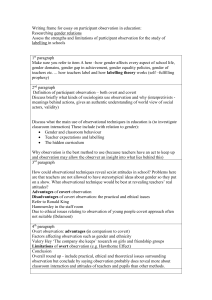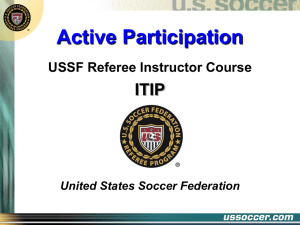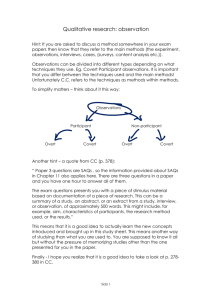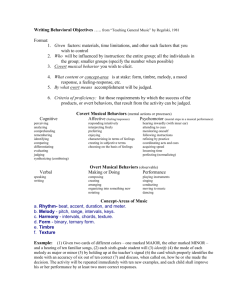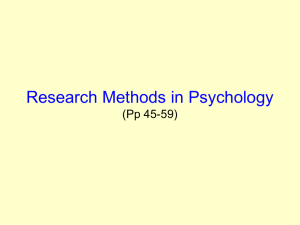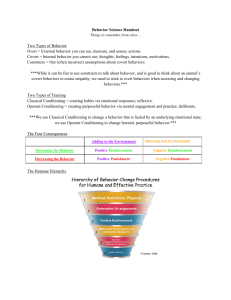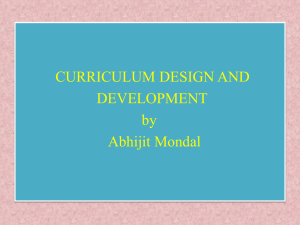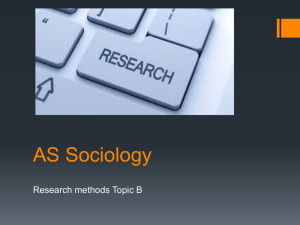Active Participation Lesson Plan - ENY Soccer Referees Association
advertisement
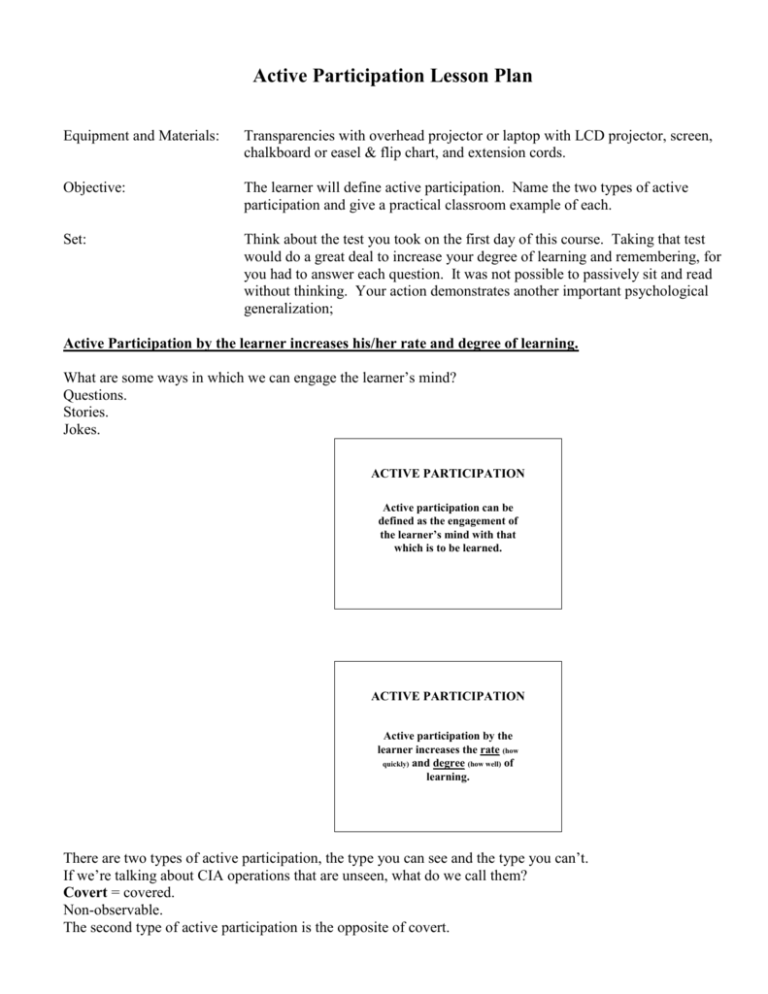
Active Participation Lesson Plan Equipment and Materials: Transparencies with overhead projector or laptop with LCD projector, screen, chalkboard or easel & flip chart, and extension cords. Objective: The learner will define active participation. Name the two types of active participation and give a practical classroom example of each. Set: Think about the test you took on the first day of this course. Taking that test would do a great deal to increase your degree of learning and remembering, for you had to answer each question. It was not possible to passively sit and read without thinking. Your action demonstrates another important psychological generalization; Active Participation by the learner increases his/her rate and degree of learning. What are some ways in which we can engage the learner’s mind? Questions. Stories. Jokes. ACTIVE PARTICIPATION Active participation can be defined as the engagement of the learner’s mind with that which is to be learned. ACTIVE PARTICIPATION Active participation by the learner increases the rate (how quickly) and degree (how well) of learning. There are two types of active participation, the type you can see and the type you can’t. If we’re talking about CIA operations that are unseen, what do we call them? Covert = covered. Non-observable. The second type of active participation is the opposite of covert. Overt = open. Measurable. You can see or hear if the student is participating. ACTIVE PARTICIPATION Two types of active participation: • Covert - non-observable, must be elicited by the teacher, • Overt - observable, measurable Both overt and covert responses are effective in increasing the speed and amount of learning. With younger learners we often require overt responses as this seems to help them focus on the learning task and gives us tangible evidence that they are participating. We ask them to “point”, “raise their hands”, “show me”, etc. With more mature learners who have the mental discipline to maintain their focus, we often work with covert responses as we ask them to “think about”, “consider these alternatives”, decide on which you prefer. A covert response is more efficient in terms of saving time. You can think of something faster than you can say it or write about it. An overt response is more efficient in terms of making sure your students are actively participating rather than daydreaming for it provides you with tangible evidence. The most effective use of active participation puts “covert” (wait time) and “overt” together. It gives direction for covert activity allows thinking time followed by overt activity. [One of the problems with overt participation is that many teachers think it requires paper and pencil. The response can be verbal or a signal such as raising hands, nodding heads, or forming the word with the lips. In the case of a verbal response, usually only one person has an opportunity to make it. Teachers need to ask the question of the whole group, wait so everyone can formulate a covert answer, then call on someone for the verbal response. That silence is an excellent stimulus to thinking by your students, as is the anticipation that you will call on them for the answer.] When using covert active participation, there are several factors to consider. - Covert participation demands wait-time. You can ask them to think of something without giving them time to actually do it. - What you are asking them to do must be relevant to them. You can’t ask them to picture something that they don’t know. If I asked you to picture the grille of a 67’ Chevy Impala, some of you would be able to see that in your mind, for the rest it would have no relevancy. - Your activity must raise the level of concern amongst the students. They must feel that if they don’t participate, they will suffer the consequences. - And the teacher must elicit the active participation. You have to ask them to think, imagine, picture, remember, etc. in order for them to begin the process. ACTIVE PARTICIPATION Covert participation: • Demands wait-time • Must be relevant to learner • Must increase level of concern • Must be elicited by the teacher Words: think, imagine, picture, remember Example: Thinking of the answers to our questions would be covert because another person could not tell whether or not you were doing it. Covert 1. Non-observable 2. Non-measurable 3. Elicited by the teacher 4. Relevant to the learning 5. Demands wait-time 6. Must raise level of concern Overt participation, on the other hand, elicits an observable response. Again it must be relevant to the learner and the teacher must elicit it. ACTIVE PARTICIPATION Overt participation: • Observable response • Must be relevant to learner • Must be elicited by the teacher Words: show me, write, draw, tell your neighbor Writing the answers to our questions is overt because another person could observe your action. Overt 1. Observable 2. Measurable 3. Elicited by the teacher 4. Relevant to the learning If they think you’re going to call on them for an answer, they will concentrate on your question rather than pursuing other activities. ACTIVE PARTICIPATION Active participation is the number one way to help with discipline and behavior management. If you ask for a covert response then have students respond overtly, you can increase the quality of the responses. You must give the students time to develop the covert response before asking for overt responses. Exercise: Think of the five most common problems with soccer fields that you deal with. Ask students to list them in order. Ask a student to name their first problem. Ask if anyone else had that problem. Do this for all students. Review: ACTIVE PARTICIPATION Using overt and covert together, holds the learner responsible and increases the quality of overt responses. Review: ACTIVE PARTICIPATION Responsibilities of the teacher: • Engage the brain of the learner • Create relevant learning activities • Engage students consistently throughout the lesson • Involve all students I find that having nametags for the first session is helpful for this purpose. It also allows other students to get to know each other. They’ll probably work with that person later. Asking a question and waiting is hard. Waiting forces the students to develop a response. Calling on a student to give a response will also reinforce their need to actively participate - whether overtly (responding to question) or covertly (formulating a response). Be sure to ask question first, then call on student. Naming a student first lets everyone else off the hook. Randomly select students and call on some students right after they have answered, so even after answering, they will formulate responses. When asking for overt participation, monitor the students for appropriate responses. ACTIVE PARTICIPATION Ways to promote active participation: • Get in the habit of calling on all students rather than “volunteers” who raise their hands. • Ask a question and wait for a response. • Ask a question, then call on a student. Helps to ensure the possibility of covert behavior for all. • Don’t use round-robin questioning. • Monitor students for overt behavior. Closure: Think about the definition of active participation, in a moment I will call on someone to give me that definition. (Solicit response) Can anyone tell me what kind of active participation I just used? With a partner, discuss the two types of active participation and the critical attributes that define them and come up with an example of each type that you might use in your classroom to get your students to actively participate. (Monitor the groups, and then solicit responses) The trick is to get your students to actively participate in their learning either overtly or covertly so they just don’t sit there while you wear yourself to a frazzle trying to teach them.
